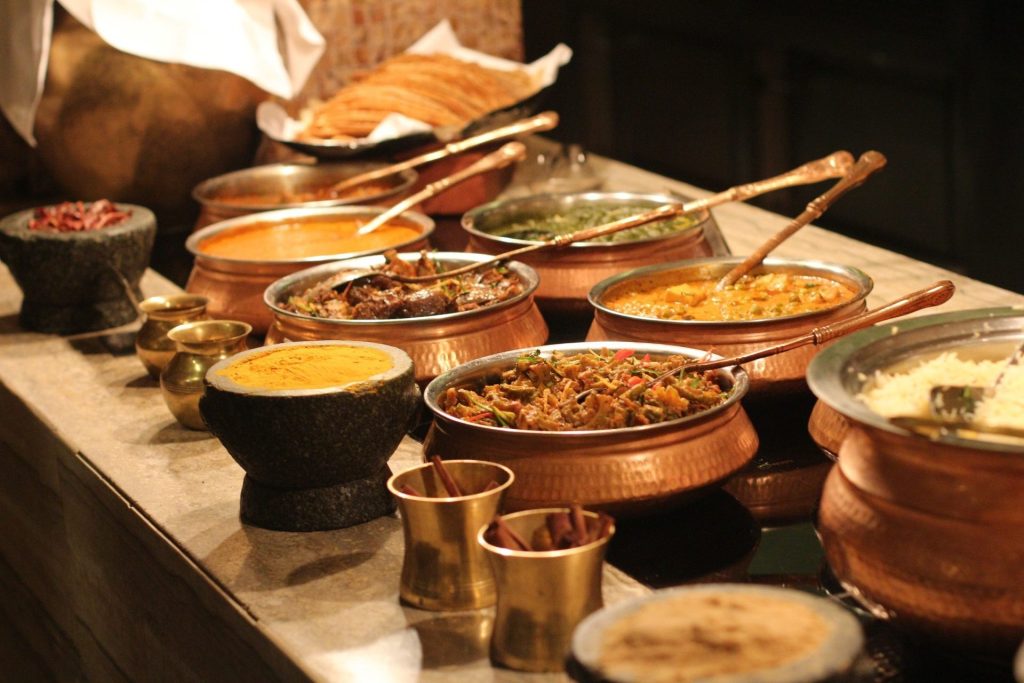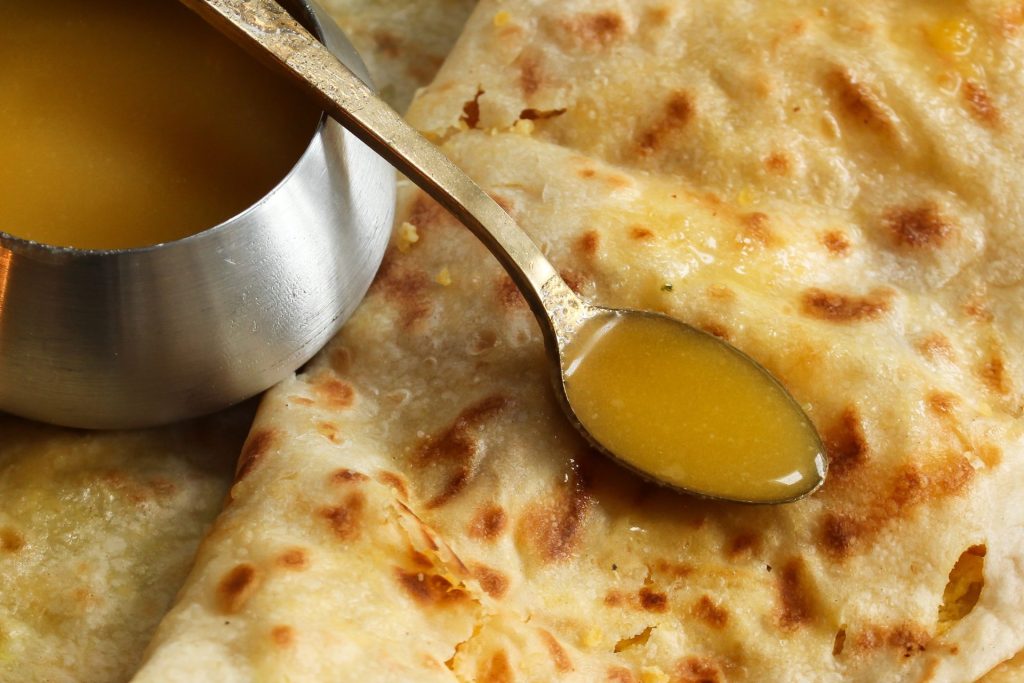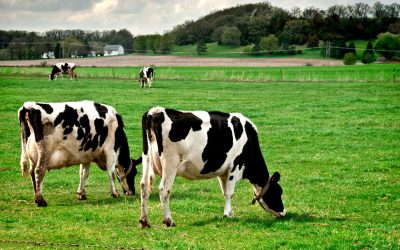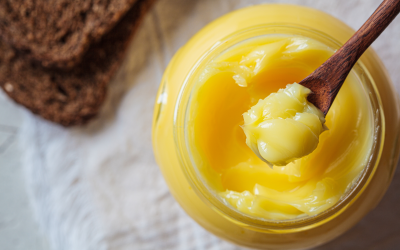The Rich History and Cultural Heritage of Ghee
Discover the fascinating journey of ghee through centuries of culinary tradition
Step into any traditional Indian, Pakistani, or Middle Eastern kitchen, and you’ll find one ingredient that’s been the heart of countless meals for over 4,000 years: ghee. This golden treasure isn’t just a cooking fat – it’s a bridge between ancient wisdom and modern nutrition, carrying with it the stories, traditions, and flavors of entire civilizations.
The story of ghee is the story of human ingenuity, cultural exchange, and the eternal quest to create something truly nourishing from simple ingredients. Today, as we rediscover the benefits of traditional foods, ghee stands as a testament to the wisdom of our ancestors and the timeless appeal of authentic flavors.
The Ancient Origins of Liquid Gold
The history of ghee begins in the ancient Indus Valley, where ingenious cooks discovered that by gently heating butter and removing the milk solids, they could create a stable, flavorful fat that wouldn’t spoil in the hot climate. This wasn’t just a practical innovation – it was a culinary revolution that would shape the cuisine of entire regions.
Archaeological evidence suggests that ghee-making techniques were well-established by 2000 BCE, making it one of humanity’s oldest processed foods. The process was so valued that it was considered almost sacred, with specific rituals and techniques passed down through generations like precious family heirlooms.
In ancient Sanskrit texts, ghee is called “ghrita,” and it appears in the Vedas as both a food and a sacred offering. The Rig Veda describes ghee as “the navel of immortality,” highlighting its importance not just as sustenance, but as a symbol of purity and divine blessing.

Sacred Significance and Spiritual Traditions
In Hindu tradition, ghee holds profound spiritual significance that goes far beyond its culinary uses. It’s considered one of the most sacred substances, used in religious ceremonies, temple offerings, and traditional medicine. The lighting of ghee lamps during festivals like Diwali symbolizes the victory of light over darkness, knowledge over ignorance.
This spiritual connection to ghee reflects a deep understanding of its nourishing properties. Ancient texts describe ghee as “rasayana” – a rejuvenative substance that promotes longevity, vitality, and spiritual clarity. The act of making ghee was often accompanied by prayers and mantras, recognizing it as a transformation of the ordinary into the sacred.
Even today, many families maintain these traditions, with grandmothers teaching their grandchildren not just how to make ghee, but why it’s made with reverence and care. Each batch carries forward centuries of wisdom and blessing.
The Heart of Indian Cuisine
To understand Indian cuisine is to understand the role of ghee. It’s not merely a cooking medium – it’s the foundation upon which the complex flavors of South Asian cooking are built. The rich, nutty aroma of ghee creates the perfect base for tempering spices, a technique called “tadka” or “chaunk” that releases the essential oils and creates the distinctive flavors that define Indian cooking.
In traditional Indian households, the day often begins with the gentle simmering of ghee, filling the kitchen with its characteristic aroma. This daily ritual connects families to their heritage while creating the foundation for meals that nourish both body and soul.
From the delicate biryanis of Hyderabad to the rich curries of Punjab, ghee provides the luxurious mouthfeel and authentic taste that makes these dishes so beloved. It’s the secret ingredient that transforms simple vegetables into feast-worthy dishes and elevates rice into aromatic, golden perfection.
Regional Variations and Cultural Adaptations
As trade routes spread ghee across the ancient world, different cultures adapted it to their local ingredients and preferences. In the Middle East, ghee became “samn baladi,” incorporating regional herbs and spices. Persian cuisine embraced ghee for its ability to enhance the delicate flavors of saffron and rosewater in both sweet and savory dishes.
Each region developed its own techniques and traditions around ghee-making. In Kashmir, ghee was often infused with cardamom and saffron. In Bengal, it was used to create the famous “mishti” sweets that are central to celebrations and festivals. In Pakistan, ghee became essential for creating the rich, aromatic dishes that define the country’s culinary identity.
These regional variations demonstrate ghee’s remarkable versatility and its ability to enhance local ingredients while maintaining its essential character. Whether used in delicate pastries or robust curries, ghee adapts while always remaining true to its authentic nature.

The Art of Traditional Ghee-Making
Traditional ghee-making is truly an art form, requiring patience, skill, and intuition. The process begins with fresh, high-quality butter, preferably from grass-fed cows. The butter is slowly heated, allowing the water to evaporate and the milk solids to separate and caramelize, creating ghee’s distinctive nutty flavor and golden color.
Master ghee-makers can tell by sound, smell, and color when the ghee is perfectly ready. The gentle bubbling changes pitch as the water evaporates, the aroma deepens from fresh butter to rich nuttiness, and the color transforms from pale yellow to deep gold. This sensory knowledge, passed down through generations, ensures that each batch achieves the perfect balance of flavor and purity.
The traditional method also involves chanting or singing during the process, with many believing that positive energy and intention improve the final product. This holistic approach to food preparation reflects the deep cultural understanding that what we eat affects not just our physical health, but our emotional and spiritual wellbeing.
Ghee in Festive Celebrations
No Indian festival or celebration is complete without ghee. During Diwali, homes are filled with the aroma of ghee-rich sweets like ladoos and halwa. At weddings, elaborate feasts feature dishes cooked exclusively in ghee, symbolizing prosperity and abundance. The phrase “ghee khana” (eating ghee) is synonymous with living well and celebrating life’s good moments.
These celebrations reinforce ghee’s role as more than just food – it’s a symbol of hospitality, generosity, and joy. When guests are served food prepared with ghee, it’s a sign of respect and care. The host is sharing not just a meal, but a piece of their cultural heritage.

Modern Revival and Global Appreciation
Today, as the world rediscovers the benefits of traditional foods, ghee is experiencing a remarkable renaissance. Health-conscious consumers are buying ghee online to incorporate this ancient superfood into their modern kitchens. Food enthusiasts are learning to appreciate ghee’s unique ability to enhance flavors while providing superior nutrition.
This global appreciation has led to innovations in ghee production, with companies like Golden Farm combining traditional methods with modern quality standards. By using 100% Australian, organic dairy and time-honored techniques, they’re creating ghee that honors the ancient traditions while meeting contemporary expectations for purity and quality.
Preserving Tradition in Every Golden Drop
The beauty of ghee lies in its ability to connect us to our roots while nourishing our present. Every spoonful carries with it the wisdom of ancient cooks, the blessings of countless celebrations, and the love of families who have cherished this golden ingredient for generations.
When you choose authentic, traditionally-made ghee, you’re not just selecting a cooking ingredient – you’re participating in a cultural tradition that spans millennia. You’re supporting the preservation of ancient knowledge while enjoying the timeless pleasure of food prepared with care and reverence.
From the sacred fires of ancient temples to the bustling kitchens of modern homes, ghee continues to bring people together, creating moments of nourishment and joy. It’s a reminder that the best foods are often the simplest ones, transformed by time, tradition, and love into something truly extraordinary.
The story of ghee is still being written, with each jar, each meal, and each family that discovers its magic. As you incorporate this ancient superfood into your own culinary adventures, you become part of this ongoing story – a connection between past and present, tradition and innovation, sustenance and celebration.



